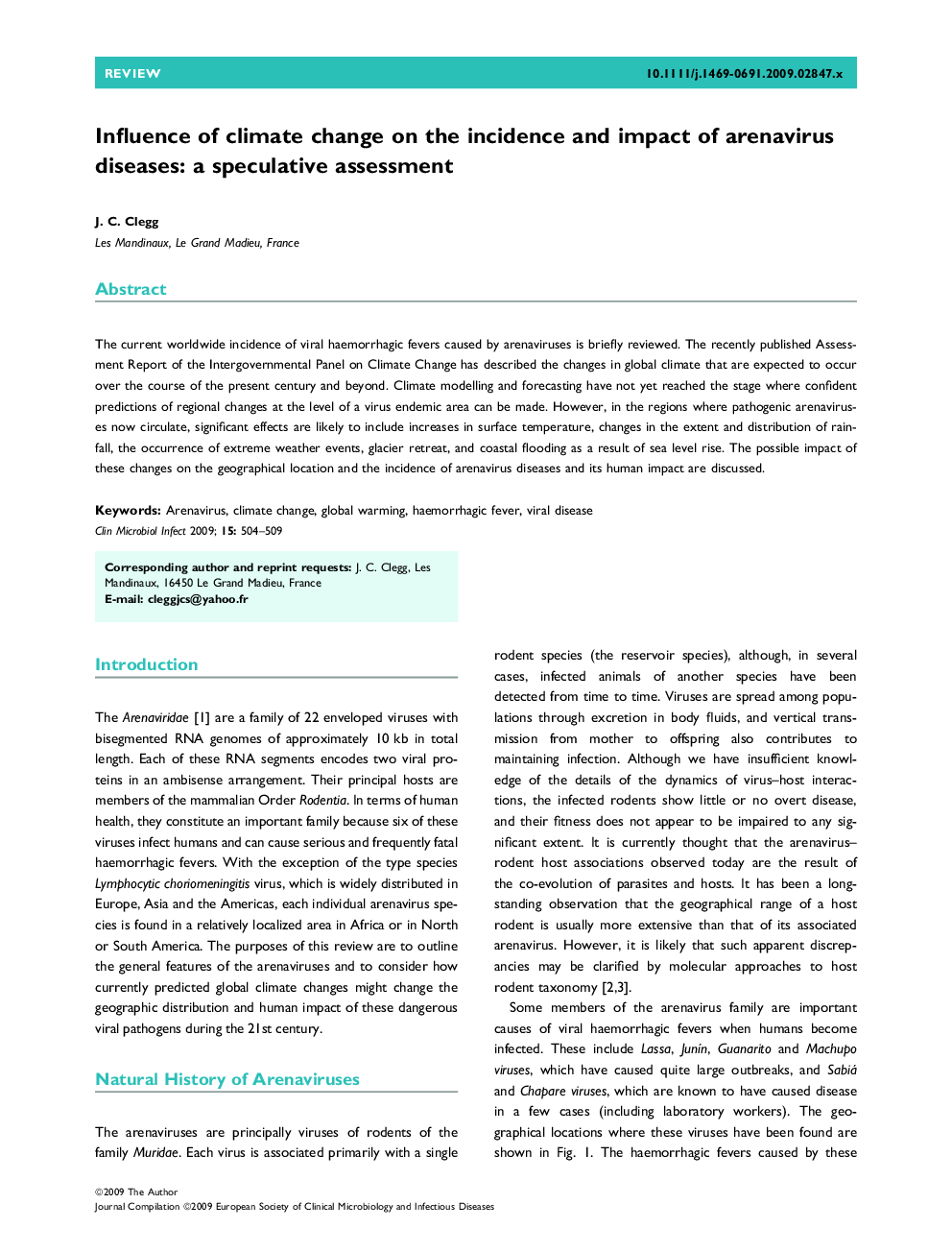| Article ID | Journal | Published Year | Pages | File Type |
|---|---|---|---|---|
| 3397917 | Clinical Microbiology and Infection | 2009 | 6 Pages |
The current worldwide incidence of viral haemorrhagic fevers caused by arenaviruses is briefly reviewed. The recently published Assessment Report of the Intergovernmental Panel on Climate Change has described the changes in global climate that are expected to occur over the course of the present century and beyond. Climate modelling and forecasting have not yet reached the stage where confident predictions of regional changes at the level of a virus endemic area can be made. However, in the regions where pathogenic arenaviruses now circulate, significant effects are likely to include increases in surface temperature, changes in the extent and distribution of rainfall, the occurrence of extreme weather events, glacier retreat, and coastal flooding as a result of sea level rise. The possible impact of these changes on the geographical location and the incidence of arenavirus diseases and its human impact are discussed.
